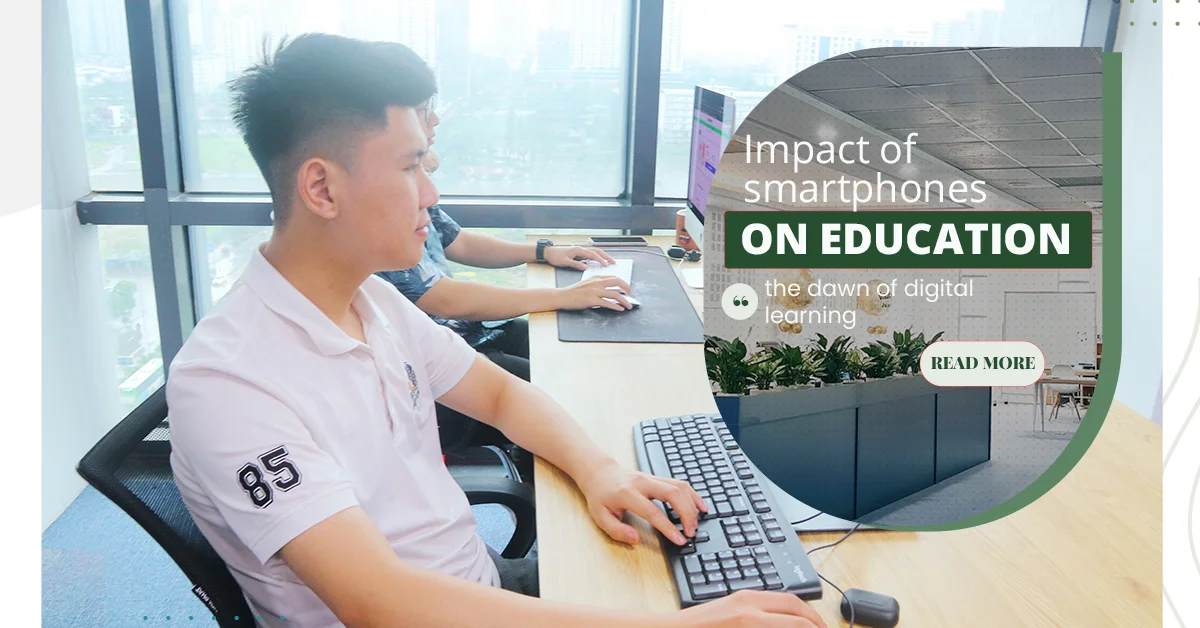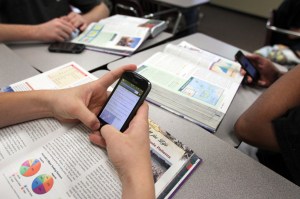Smartphones in Education: Revolutionizing Learning for the Digital Age
In today’s digital era, smartphones have evolved far beyond being just tools for communication and entertainment. One of the most transformative areas where smartphones are making a significant impact is education. With the increasing use of mobile devices in classrooms, the educational landscape is shifting, making learning more accessible, flexible, and engaging. Smartphones are no longer just a distraction for students; they have become a valuable asset to both students and teachers, enhancing the learning experience and fostering new opportunities for educational advancement.
In this article, we will explore the role of smartphones in education, their benefits, challenges, and how they are shaping the future of learning.

The Rise of Smartphones in the Classroom
Smartphones: A New Tool for Learning
With their multifunctional capabilities, smartphones have become an essential tool for students in the classroom and beyond. No longer limited to phone calls or texting, these devices now serve as mobile learning hubs, providing students with immediate access to a wealth of resources, apps, and tools.
From educational apps and online resources to digital textbooks and interactive learning platforms, smartphones are enhancing the way students engage with course materials. Smartphones also allow for personalized learning, enabling students to access content tailored to their individual needs, preferences, and learning styles.
How Smartphones are Changing the Learning Environment
Smartphones are shifting traditional educational boundaries, fostering a more interactive, collaborative, and flexible learning environment. Some of the key ways in which smartphones are impacting education include:
- Access to Information: Smartphones provide students with instant access to the internet, allowing them to search for information, explore new topics, and engage with diverse perspectives on any subject.
- Educational Apps: There are countless apps designed to aid in learning, from language learning apps like Duolingo to math tools like Photomath and creative platforms like Adobe Spark.
- Enhanced Engagement: With the rise of multimedia content such as videos, podcasts, and interactive quizzes, smartphones make learning more engaging and dynamic.
The Benefits of Smartphones in Education
The integration of smartphones into education comes with numerous benefits that are reshaping how students learn and how teachers teach. Some of the top advantages of using smartphones in education include:
1. Improved Access to Learning Resources
Smartphones allow students to access educational content from anywhere and at any time. E-books, online courses, and educational videos are just a tap away, making learning more accessible for students regardless of their location or schedule. This ease of access fosters continuous learning outside of the classroom, which is particularly valuable for remote learning or self-paced courses.

2. Enhanced Communication and Collaboration
In modern classrooms, collaborative learning is essential. Smartphones facilitate communication between students and teachers through instant messaging, emails, and educational platforms like Google Classroom or Microsoft Teams. Students can ask questions, submit assignments, and collaborate on group projects, all in real-time.
Moreover, smartphones support peer-to-peer collaboration, allowing students to work together, share ideas, and provide feedback through apps like Slack or Padlet.
3. Personalized Learning
Every student learns differently, and smartphones enable personalized learning by offering tools that cater to diverse learning needs. With the use of apps and online platforms, students can work at their own pace, revisit challenging topics, and receive adaptive learning experiences that align with their learning style.
For instance, apps like Khan Academy and Quizlet offer personalized quizzes and interactive lessons that can help students master concepts at their own pace.
4. Real-Time Feedback and Assessment
Smartphones provide teachers with the ability to give real-time feedback to students. Through platforms like Google Forms, Socrative, or Edmodo, teachers can create quizzes and surveys, instantly assessing student performance and understanding.
This quick feedback loop helps identify areas where students need improvement and allows for targeted interventions, improving the overall learning experience.
5. Increased Student Engagement
Smartphones make learning more dynamic by integrating various forms of media, including videos, interactive quizzes, and virtual simulations. This multimedia approach helps keep students engaged and motivated, especially when learning complex topics.
Educational tools such as Augmented Reality (AR) and Virtual Reality (VR) are gaining traction in classrooms, offering immersive learning experiences. For example, students can explore historical sites or conduct science experiments using AR apps directly on their smartphones.
Challenges of Using Smartphones in Education
While smartphones offer numerous benefits, there are also challenges that need to be addressed to ensure their effectiveness in education.
1. Distractions in the Classroom
One of the most commonly cited concerns with smartphones in education is the potential for distractions. Social media, games, and messaging apps can detract from students’ focus, leading to disengagement during lessons.
To mitigate this, many schools and educators are implementing smartphone policies that restrict usage during class or encourage students to use their devices for educational purposes only. App-blocking software and classroom management tools can also help ensure that smartphones are used productively.
2. Equity and Access
Not all students have access to the latest smartphones or reliable internet connections, which can create a digital divide. In many parts of the world, students in low-income communities may not have the resources needed to take full advantage of smartphone-based learning.
To combat this, some educational institutions are working with tech companies to provide affordable smartphones or subsidized data plans to ensure that every student has access to the necessary tools for learning.
3. Data Privacy and Security
With the growing use of smartphones in education, there is an increased risk of data privacy breaches and cybersecurity threats. Sensitive information such as student grades, assignments, and personal data are stored on mobile devices and online platforms, making them potential targets for cyberattacks.
To address this, schools must adopt secure platforms, enforce strong data protection policies, and educate students about safe internet practices.
The Future of Smartphones in Education
As smartphones continue to evolve, their role in education will only grow more significant. With advancements in artificial intelligence (AI), machine learning, and cloud computing, smartphones will become even more integral to the learning process.
Some of the promising developments in the future of smartphones in education include:
- AI-Powered Tutoring: Smartphones could offer intelligent tutoring systems that adapt to individual students’ needs, providing real-time guidance and support.
- Cloud-Based Learning: With cloud storage, students can access their learning materials and assignments from any device, making learning truly mobile and flexible.
- Gamification: Mobile apps will increasingly incorporate gamified learning, making education fun and interactive, while helping students develop essential skills in problem-solving and critical thinking.

FAQs
1. How do smartphones enhance education?
Smartphones enhance education by providing instant access to learning materials, fostering collaboration between students and teachers, and enabling personalized learning experiences. They also increase student engagement through interactive multimedia content.
2. What are the challenges of using smartphones in classrooms?
Some of the challenges include distractions, inequity in access to smartphones and the internet, and concerns about data privacy and security. However, these can be mitigated with effective policies, equitable access programs, and robust cybersecurity measures.
3. How can teachers integrate smartphones into their lessons effectively?
Teachers can integrate smartphones by using educational apps, assigning online research tasks, and encouraging collaborative activities. It’s important to set clear guidelines for smartphone use and ensure that students stay on task during lessons.
4. Will smartphones replace traditional textbooks in the future?
While smartphones may not entirely replace traditional textbooks, they are becoming a popular alternative for accessing educational resources, e-books, and interactive learning tools. The shift towards digital learning is expected to continue, especially in remote and blended learning environments.
Conclusion: Embracing the Digital Revolution in Education
Smartphones are undeniably transforming the educational landscape. They provide students with the tools they need to learn more efficiently, collaborate with peers and teachers, and engage in dynamic, personalized learning experiences. While challenges like distractions and equity issues remain, the potential benefits of smartphones in education far outweigh these obstacles.
As smartphones continue to evolve, they will play an even more crucial role in making education accessible, flexible, and interactive for learners of all ages. By harnessing the power of smartphones, educators can unlock new possibilities for teaching and learning, paving the way for a brighter, more innovative future in education.
For more insights on technology and education, visit EdTech Magazine.

